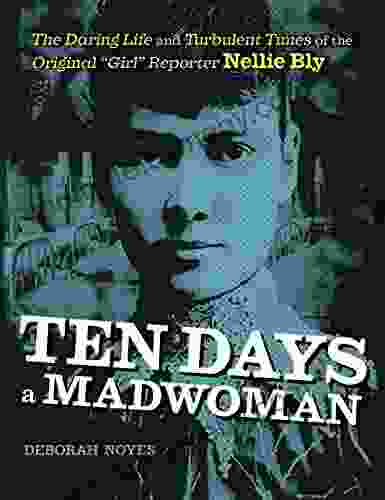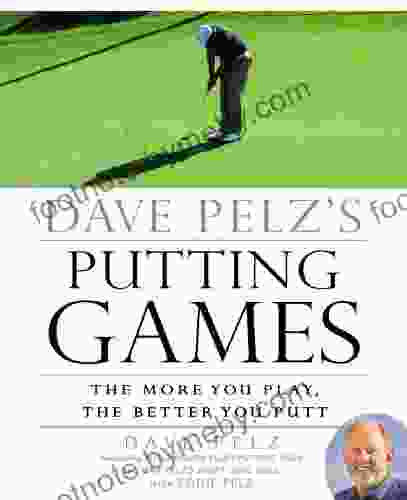How to Make Every Putt: Master the Greens and Elevate Your Golf Game


4.4 out of 5
| Language | : | English |
| File size | : | 945 KB |
| Text-to-Speech | : | Enabled |
| Screen Reader | : | Supported |
| Enhanced typesetting | : | Enabled |
| Word Wise | : | Enabled |
| Print length | : | 162 pages |
Putting is an essential skill in golf, and it can make or break your score. If you're struggling to sink putts, don't despair! This comprehensive guide will teach you everything you need to know about reading greens, controlling distance, and developing a consistent putting stroke.
Chapter 1: Reading Greens
Reading greens is one of the most important aspects of putting. It allows you to determine the slope and speed of the green so that you can hit your putt with the correct speed and line. There are a few things to look for when reading greens:
- Slope: Greens can slope in a variety of directions, so it's important to identify the slope before you hit your putt. You can do this by looking at the contour lines on the green or by observing how other players are putting.
- Speed: The speed of the green will determine how far your putt will roll. Greens that are wet or in the shade will be slower than greens that are dry or in the sun. You can gauge the speed of the green by hitting a few practice putts.
Chapter 2: Controlling Distance
Once you've read the green, it's time to control the distance of your putt. This is where a consistent putting stroke comes into play. A good putting stroke will help you hit the ball with the same speed and accuracy every time.
To develop a consistent putting stroke, it's important to practice regularly. Start by practicing on a flat surface, and then gradually move to practicing on a green. As you practice, focus on keeping your head down and your stroke smooth. You should also try to hit the ball with the same speed every time.
Chapter 3: Developing a Consistent Putting Stroke
In addition to practicing your putting stroke, there are a few other things you can do to improve your putting. These include:
- Use the correct putter: There are a variety of putters on the market, so it's important to find one that suits your stroke. If you're not sure which putter is right for you, consult with a golf instructor.
- Use the correct grip: The way you grip the putter can affect your stroke. There are a variety of different grips, so experiment with a few different ones to find the one that feels most comfortable for you.
- Use the correct stance: Your stance can also affect your stroke. Stand with your feet shoulder-width apart and your knees slightly bent. Keep your head down and your eyes on the ball.
- Visualize the putt: Before you hit your putt, take a few seconds to visualize the ball going in the hole. This will help you focus and make a more confident stroke.
Chapter 4: Putting in Competition
Putting in competition can be a different beast than putting in practice. Here are a few tips for putting in competition:
- Stay calm: It's easy to get nervous when you're putting in competition, but it's important to stay calm and focused. Take a few deep breaths and focus on your stroke.
- Trust your instincts: You've put in the practice, so trust your instincts and hit the putt that you think is best. Don't be afraid to make adjustments based on the conditions, but don't overthink it.
- Don't be afraid to miss: Everyone misses putts, even the pros. If you miss a putt, don't let it get to you. Just focus on the next putt.
Chapter 5:
Putting is an essential skill in golf, and it can make or break your score. By following the tips in this guide, you can improve your putting and lower your scores. So what are you waiting for? Start practicing today and see how much your putting improves!
4.4 out of 5
| Language | : | English |
| File size | : | 945 KB |
| Text-to-Speech | : | Enabled |
| Screen Reader | : | Supported |
| Enhanced typesetting | : | Enabled |
| Word Wise | : | Enabled |
| Print length | : | 162 pages |
Do you want to contribute by writing guest posts on this blog?
Please contact us and send us a resume of previous articles that you have written.
 Book
Book Novel
Novel Page
Page Chapter
Chapter Text
Text Story
Story Genre
Genre Reader
Reader Library
Library Paperback
Paperback E-book
E-book Magazine
Magazine Newspaper
Newspaper Paragraph
Paragraph Sentence
Sentence Bookmark
Bookmark Shelf
Shelf Glossary
Glossary Bibliography
Bibliography Foreword
Foreword Preface
Preface Synopsis
Synopsis Annotation
Annotation Footnote
Footnote Manuscript
Manuscript Scroll
Scroll Codex
Codex Tome
Tome Bestseller
Bestseller Classics
Classics Library card
Library card Narrative
Narrative Biography
Biography Autobiography
Autobiography Memoir
Memoir Reference
Reference Encyclopedia
Encyclopedia David Sloan Wilson
David Sloan Wilson Dr Joseph Parent
Dr Joseph Parent Dawn Brookes
Dawn Brookes Tim Robinson
Tim Robinson David Mannall
David Mannall Immaculee Ilibagiza
Immaculee Ilibagiza Davide Napolitano
Davide Napolitano David Lindahl
David Lindahl Deb Howcroft
Deb Howcroft David G Hartwell
David G Hartwell David B Grant
David B Grant Daryn Kagan
Daryn Kagan Darryl Hughes
Darryl Hughes Dean Jobb
Dean Jobb David Carrier
David Carrier David Cockburn
David Cockburn Isla Wynter
Isla Wynter Deborah Blum
Deborah Blum David G Cook
David G Cook Deborah Macnamara Phd
Deborah Macnamara Phd
Light bulbAdvertise smarter! Our strategic ad space ensures maximum exposure. Reserve your spot today!

 Jedidiah HayesTales From America's Mountains Ski Towns: A Literary Journey Through Winter's...
Jedidiah HayesTales From America's Mountains Ski Towns: A Literary Journey Through Winter's...
 Bryson HayesUnleash the Culinary Intrigue in Simmering With Resentment: A Mouthwatering...
Bryson HayesUnleash the Culinary Intrigue in Simmering With Resentment: A Mouthwatering... Patrick HayesFollow ·13.7k
Patrick HayesFollow ·13.7k Edwin CoxFollow ·16.7k
Edwin CoxFollow ·16.7k Alex ReedFollow ·17.9k
Alex ReedFollow ·17.9k Steven HayesFollow ·13.1k
Steven HayesFollow ·13.1k William FaulknerFollow ·10.8k
William FaulknerFollow ·10.8k Jimmy ButlerFollow ·2.5k
Jimmy ButlerFollow ·2.5k Boris PasternakFollow ·14.5k
Boris PasternakFollow ·14.5k Brett SimmonsFollow ·14.5k
Brett SimmonsFollow ·14.5k

 Jayden Cox
Jayden CoxFaith Lies and the War on Terror: Exposing the Truth...
In the aftermath of the 9/11...

 Jack Powell
Jack PowellMad About the Trump Era: Mad Magazine 2024
The Trump...

 Warren Bell
Warren BellYou Got This: Tips for Women Who Want to Rock at Real...
Real estate...

 Ernest Cline
Ernest ClineThe Daring Life and Turbulent Times of the Original Girl...
: Embracing the Spirit of Adventure In...
4.4 out of 5
| Language | : | English |
| File size | : | 945 KB |
| Text-to-Speech | : | Enabled |
| Screen Reader | : | Supported |
| Enhanced typesetting | : | Enabled |
| Word Wise | : | Enabled |
| Print length | : | 162 pages |












